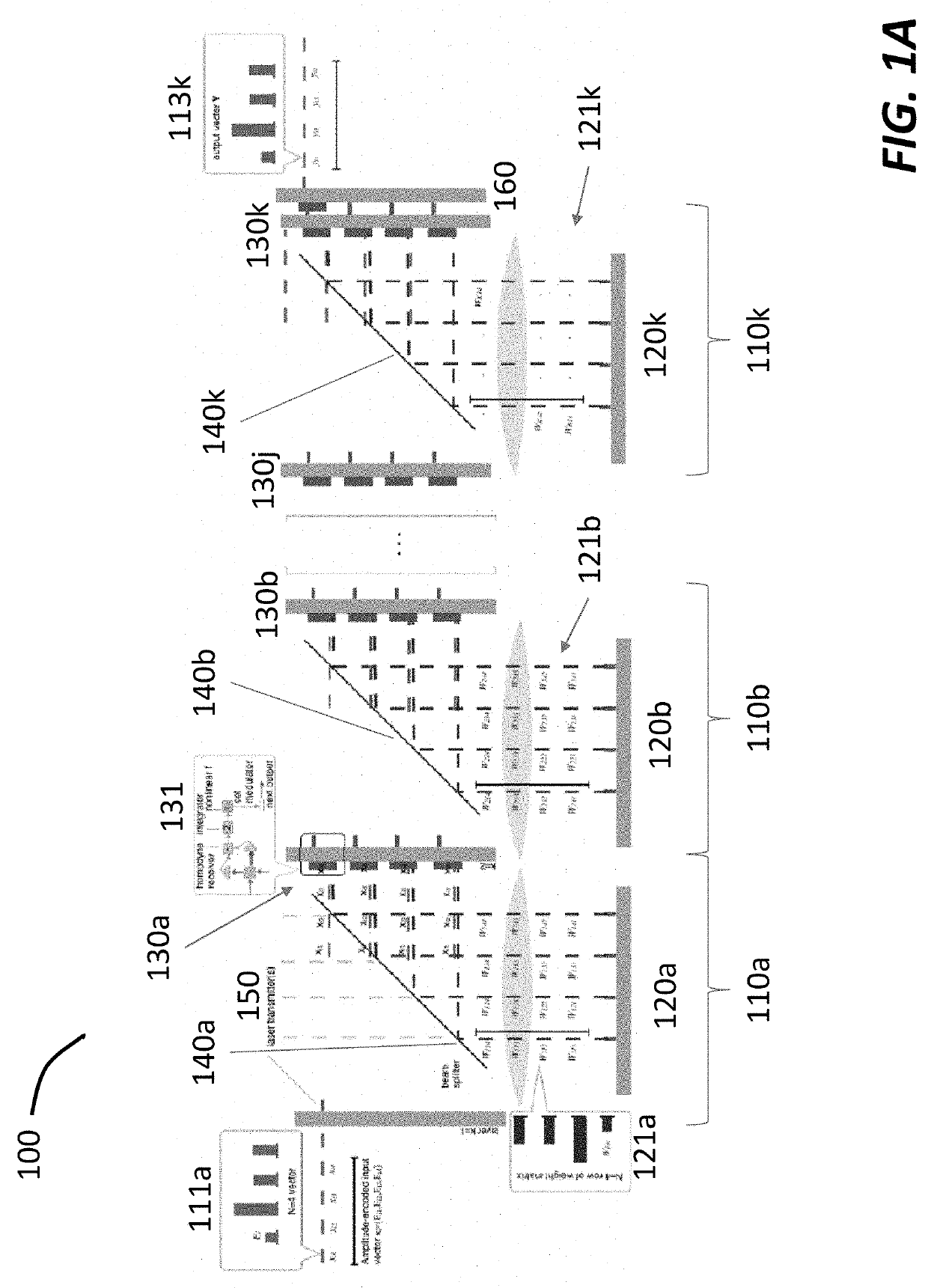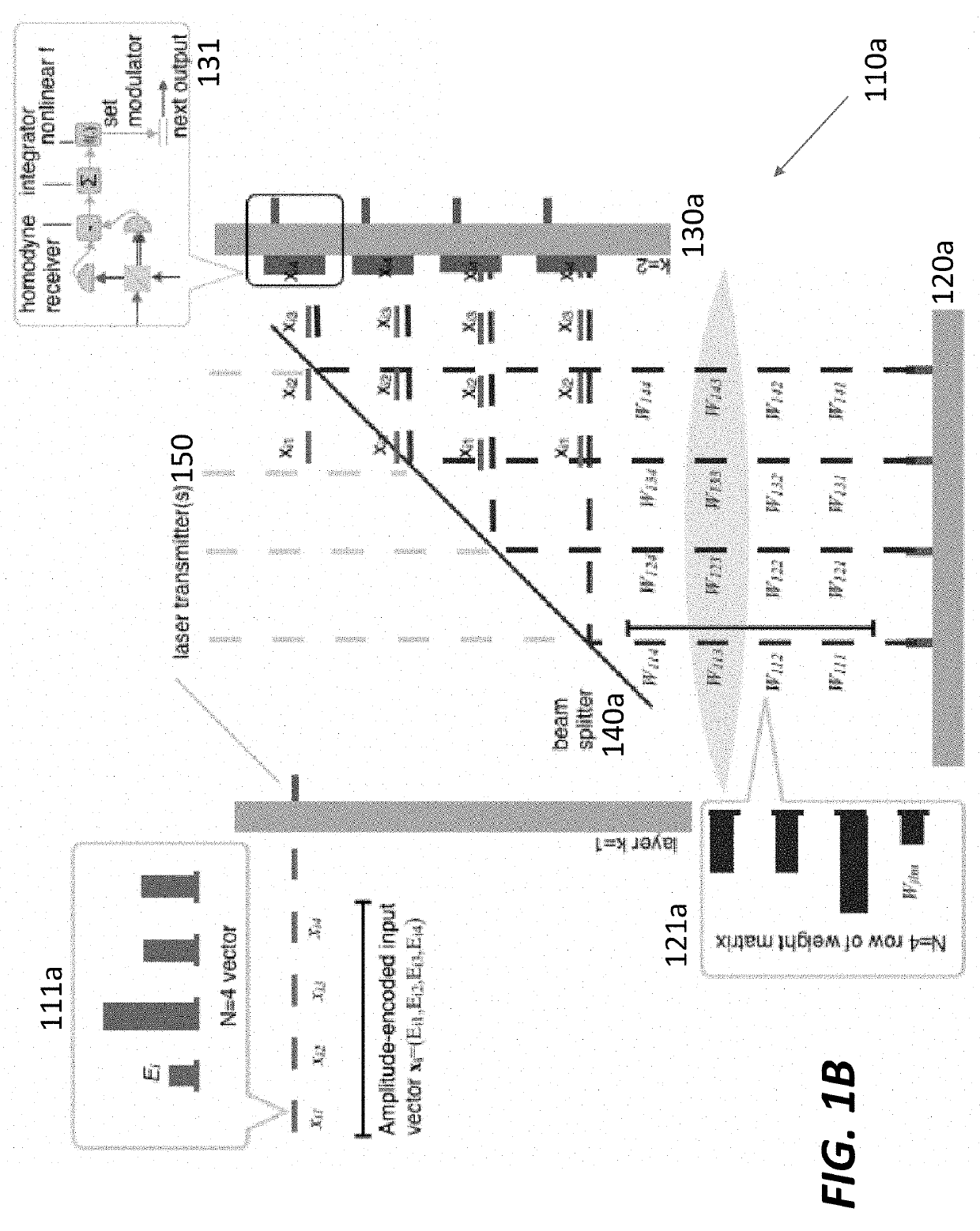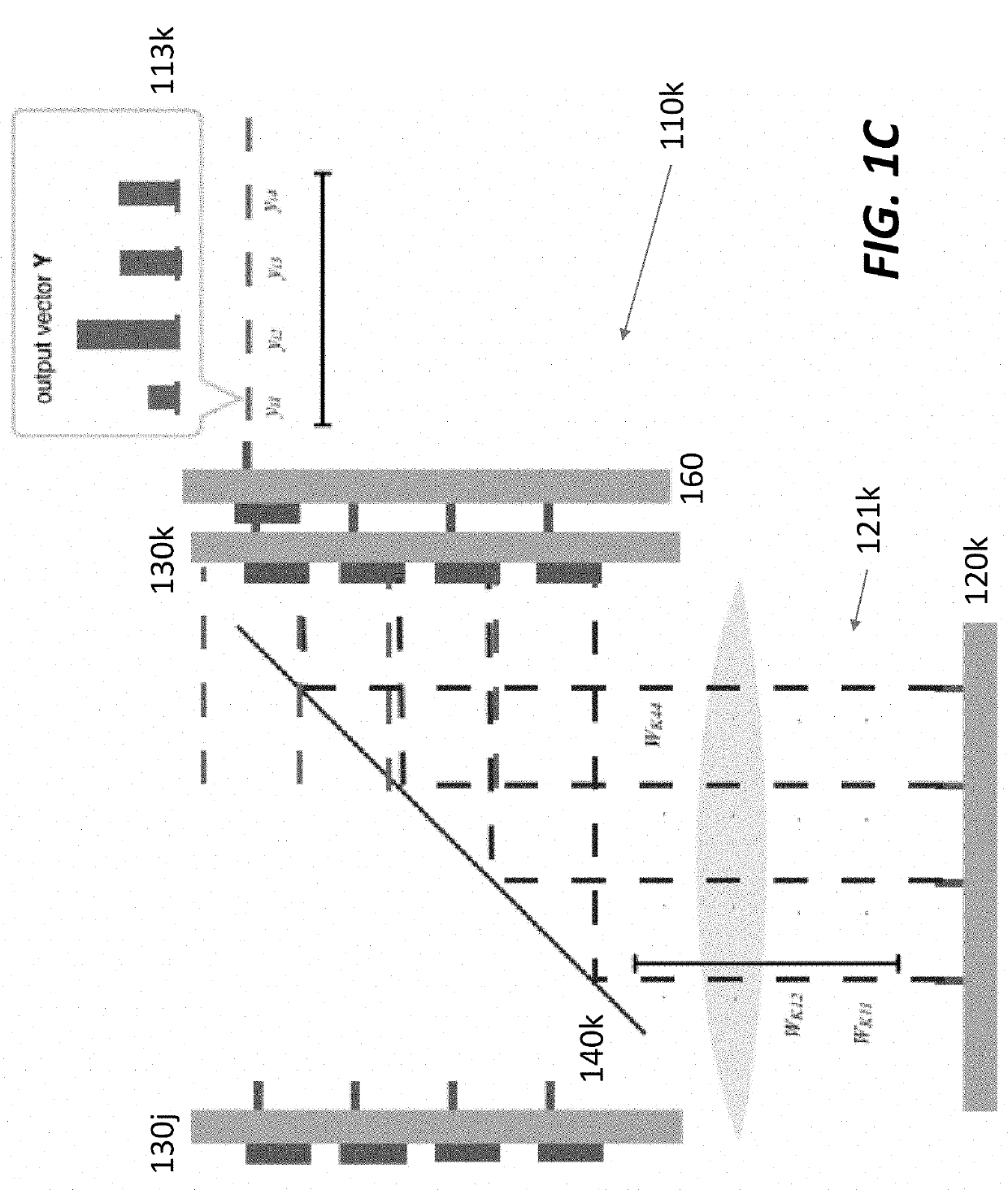Serialized electro-optic neural network using optical weights encoding
- Summary
- Abstract
- Description
- Claims
- Application Information
AI Technical Summary
Benefits of technology
Problems solved by technology
Method used
Image
Examples
Embodiment Construction
[0023]Apparatus, systems, and methods described herein employ optical weight encoding for a neural network to perform learning and inference at energy consumptions that are orders of magnitude lower than those of conventional electronic neural networks, such as those using graphical processing units (GPUs). The weights of the neural network that determine the matrix transformations of input signals between neuron layers are encoded optically, in contrast to hardware-encoded implementations in an electronic neural work. The optically encoded weight transformation can be easily reprogrammed and can be particularly advantageous in data centers. In these data centers, a central transmitter can encode or modulate the weights into optical beams, which are subsequently divided and distributed (e.g., using beam splitters) across a large number of neural network inference processors, thereby reproducing the weights without retrieving the weights for each calculation.
Optical Encoding for Neur...
PUM
 Login to View More
Login to View More Abstract
Description
Claims
Application Information
 Login to View More
Login to View More - R&D
- Intellectual Property
- Life Sciences
- Materials
- Tech Scout
- Unparalleled Data Quality
- Higher Quality Content
- 60% Fewer Hallucinations
Browse by: Latest US Patents, China's latest patents, Technical Efficacy Thesaurus, Application Domain, Technology Topic, Popular Technical Reports.
© 2025 PatSnap. All rights reserved.Legal|Privacy policy|Modern Slavery Act Transparency Statement|Sitemap|About US| Contact US: help@patsnap.com



